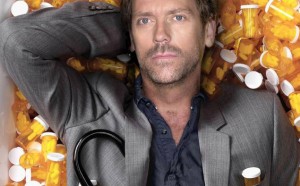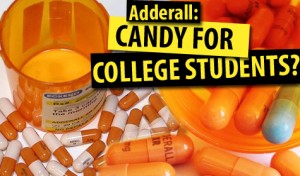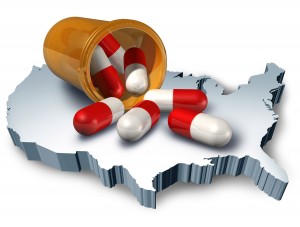Most Abused Prescription Drugs In the US
In 2009, 7 million Americans reported current (past month) nonmedical use of prescription drugs. That is greater than the number of those who used cocaine, heroin, hallucinogens, and inhalants--combined (National Institute on Drug Abuse).
In fact, for the first time, prescription drugs are now causing more deaths than illegal drugs, a death toll that climbs every year.
The problem centers on a relatively small number of medications that seem to call to people in a voice many can't ignore. Although there is no definitive data to establish a precise order, since most abuse occurs in secret, the following 5 medications rank highly among the most abused prescriptions in the country.
#1 Oxycodone (OxyContin, OxyIR, Oxifast, Roxicodone, Percocet, Percodan)
The starring drug in the roster of prescription pill abuse is oxycodone, a narcotic painkiller.
Even the most well-meaning user can soon find herself addicted (as to hydrocodone, below) as tolerance is developed, causing the patient to take higher dosages to achieve the same pain-relief.
Of course, many who abuse the pain killer never had pain. The pills are nothing more than a pathway to get high by crushing the extended release tablets into a powder and then snorting, injecting or smoking the potent residue.
The results of the country's misuse of oxycodone have been disastrous.
- It is believed that oxycodone is now responsible for over 1,000 deaths a year.
- In 2010 there were over 2,000 oxycodone-related crimes.
According to "Drug Abuse Warning Network, 2009" put out by the the Substance Abuse and Mental Health Services Administration (SAMSA), emergency room visits involving oxycodone increased 116% between 2004 and 2009. The drug made up 22.2% of requests for detox through hospital visits (a figure which includes requests for help for illegal drugs, as well) in 2009, and 5.5% of all ER drug-related suicide attempt visits.

"Oxymoms" sending a message to Gov. Rick Scott in Florida, 2011. "They're like soccer moms, except their common interest is not their children's sports, it's their children's addiction to pain pills like oxycodone." Source: Sun Sentinel.
Abuse of the medication has penetrated younger and younger swaths of society. In 2010, 2.1 % of 8thgraders, 4.6 % of 10th graders and 5.1 % of 12th graders abused oxycodone at least once.
Oxycodone exerts a powerful grip on the user. 75%-90% of all oxycodone addicts relapse within their first year out of a traditional treatment program.
We all pay for it. Oxycodone abuse costs Americans over $400 billion dollars a year, factoring in healthcare costs, car accidents, legal payments, criminal justice fees, and lost wages.
But just sometimes, we all get a little back.
In the end Purdue Pharma, OxyContin's manufacturer, had to admit that it knew about the potential for abuse. Aware that misuse of the drug would yield serious problems, Purdue consistently downplayed, with fraudulent advertising, its potential to be addictive, subject to abuse, and to cause withdrawal.
In 2007 top executives admitted their deception, and paid $634 million in fines.
#2 Hydcrocodone (Vicodin)
Following right behind its stronger cousin in abused pain medications is hydrocodone.
Some statistics make our country's use of the painkiller questionable from the get-go. 99% of the world's hydrocodone is consumed by U.S. citizens. And our use of it grows steadily. In fact, from 2000 to 2010, prescriptions for hydrocodone increased 148%.
Such abundance of hydrocodone, most commonly referred to as Vicodin, increases accessibility, and makes misuse and abuse more available for a variety of age groups.
As of April, 2012, 9.3% of high school seniors admitted to abusing hydrocodone. The elderly are particularly prone to addiction and subsequent misuse as they are often prescribed pain medication after hip and knee replacements or for arthritis without proper monitoring.
Emergency room visits involving hydrocodone increased 116% between 2004 and 2009. Drug-related suicide attempts due to hydrocodone reached 13,701, or 6.9% of all drug-related suicide attempts, a 105% increase.
It estimated that abuse in the U.S. nearly quadrupled from 2000 to 2010.

Gregory House, M.D. from the TV show House (2004-2012) lies in a bathtub of yellow tubes of vicodin.
Hydrocodone addiction reached the small screen--and impacted millions of watchers--with the character of Gregory House, M.D. on the TV show House (2004-2012). It has also reached the lives of the people behind the small and large screen alike, with actors/actresses like Matthew Perry (Friends) and Jamie Lee Curtis (the Halloween movie series) finally coming out about their addiction to the drug, along with rapper Eminem and model Nicole Ritchie.
In a state-wide microcosm of the problem, Ohio was particularly scandalized to find that in 2010, pharmacists had filled 4.8 million prescriptions for hydrocodone, which is the equivalent of one for every 2 and a half people.
Societal costs of hydrocodone abuse are even higher than those of oxycodone, draining Americans of over $484 billion annually, again in healthcare costs, traffic accidents, lost job wages, crime and the cost of prosecuting it.
#3 Xanax (Alprazolam)
Xanax is the most popular prescription medication used to treat anxiety. It is also a highly addictive and frequently-abused tranquilizer.
SAMSA found the number of ER visits due to Xanax increased 62% from 1995 to 2002--but 142% from 200 to 2009, with 20-29 year olds having the highest rate.
In 2007 alone over 80,000 people who misused Xanax needed the emergency room, while in 2009 10.4% of all illegal medicine use that led to ER visits was due to Xanax. It was responsible for 11.7% of drug-related suicide attempts (up 105% from 2004), and made up 13.5% of those seeking detox services through the ER.
Despite a common misperception that women abuse the drug more than men, abuse and addiction are equivalent among both genders.
The Xanax abuse situation has reached such staggering proportions that several clinics have stopped utilizing it at all, including one Kentucky clinic that made New York Times headlines in September of last year.
Wrote the Times, "Because of the clamor for the drug, and concern over the striking number of overdoses involving Xanax here and across the country, Seven Counties took an unusual step — its doctors stopped writing new prescriptions for Xanax and its generic version, alprazolam, in April and plan to wean patients off it completely by year’s end." It was a contentious decision--but Seven Counties is now a 'Xanax-free' zone, and a few other clinics--although very few, to be honest--have followed suit.
Xanax abuse in those in the public eye has been a chronic problem. In 2002, daughter of then-Florida-governor Jeb Bush was arrested for trying to fill a fake prescription for the tranquilizer. In 2008 actor Heath Ledger killed himself, using Xanax along with a toxic brew including oxycodone and hydrocodone. Just this past year singer Whitney Houston's death was partially attributable to the drug.
Even drug-maker Pfizer acknowledges the dangers inherent in Xanax use. In the disclosures on the Pfizer Physician Prescription Information sheet, or PPI, doctors are warned about the possibility of dependence. The sheet says, "Some patients have experienced considerable difficulty in tapering and discontinuing from alprazolam, especially those receiving higher doses for extended periods. Addiction-prone individuals should be under careful surveillance when receiving alprazolam."
But is anybody heeding the warnings? Are the doctors? Are the patients? The parents of teens?
#4 Adderrall (dextroamphetamine and amphetamine)
Adderall is a stimulant, in a class of drugs that elevate mood and increase feelings of well-being, energy and alertness. It is commonly prescribed to treat ADHD.
In terms of illegal sales online, Adderall surpasses even the previously-mentioned drugs, and takes its place with Viagra as the one of the most heavily-promoted pills. Emergency room visits involving misuse of Adderall increased 276% from 2004 to 2009.
It's no surprise that Adderall is in such high demand. Although it, too, like oxycodone and hydrocodone, can be used to "get high," it can also be used to help maintain energy and focus--making it desirable for college students. An appealing plus: extended use often leads to weight loss.
The energy it provides can help overwhelmed mothers be more perfect wives and parents, as covered last month on abcnews, who named it the new "mother's little helper of choice." The show claimed moms raid their own children's prescription bottles. Some even request the pill for themselves from their physicians. Prescriptions have increased 750% in 8 years for women between 26 and 39, while diagnoses for ADHD have not increased apace.
If you Google "how do I get my doctor to prescribe Adderall," you'll get multiple thousands of sites to assist you in your attempt to misuse the drug.

Some estimate that between 20-30% of college students abuse Adderall on a regular basis, while others believe it's closer to between 6-7%.
Overall, Adderall sales have increased by over 3,100% between 2002 and 2005, and today the pill wins the 'most-abused drug' contest hands-down when it comes to college students and young adults. Some estimate that between 20-30% of college students abuse Adderall on a regular basis, while others believe it's closer to between 6-7%.
Full-time college students aged 18 to 22 were twice as likely as non-full-time-student age counterparts to abuse the drug. On campus the drugs are in such high demand that students in legal possession of the pills sometimes feel threatened by fellow classmates desiring their medication.
One senior at Virginia’s Christopher Newport University said in an interview, "'I have to deadbolt my door so that nobody breaks into my room looking for Adderall. . .I carry my prescriptions around in my purse just to be safe.' [She] said she has previously had Adderall bottles stolen from her apartment, which has caused her to take more precautionary measures."
Although its use is accepted among today's youth, abuse can have serious consequences. High doses can cause irregular heartbeat, dangerously high body temperatures, and possibly even heart failure or seizure.
#5 Ambien (zolpidem)
Ambien is a sedative or hypnotic, meant to be used as a short-term sleeping aid for those who struggle with falling asleep.
Unfortunately a significant amount of Ambien abuse starts innocently. Those taking it for sleep may develop tolerance to the drug, needing to increase the amount they take to achieve the same effect. When patients increase the dosage without physician approval, they are on their way to abuse and addiction.
More nefarious potential for misuse is everywhere. Some report feelings of euphoria merely from resisting the urge to sleep after taking the drug. Others resort to snorting it, to the point where its makers put put a protective covering on the drug intended to prevent such abuse. To the serious drug user, this was merely a minor impediment.
Called A-minus, Zombie pills or Tic-Tacs on the street, even teenagers are popping them--for relaxation, to come down after taking stimulants, for feelings of euphoria. Youth explain the appeal by pointing out that the pills are easy to get -- on the street, from doctors, parents and friends, or on the Internet, where they go for only about $5.00 a pop.
The U.S. Drug Enforcement Agency notes that Ambien is quickly overtaking illegal sedatives as the most common date-rape drug. Due to its lack of taste, it can easily be added to drinks. The unconscious victim can remember nothing about the night of the crime.
Rapper Eminem famously abused the pill, and claimed that doing so erased years from his memory. Representative Patrick Kennedy memorably crashed his car in Washington while suffering from prescription pill addiction, most notably to Ambien. And in 2010 Tiger Woods' mistress Rachel Uchitel landed herself a spot on Celebrity Rehab thanks to the pill.
Emergency room visits due to misuse of Ambien increased 128% between 2004 and 2009, and drug-related suicide attempts due to Ambien reached 10,815, a 148% increase.




Add A Comment
No Responses